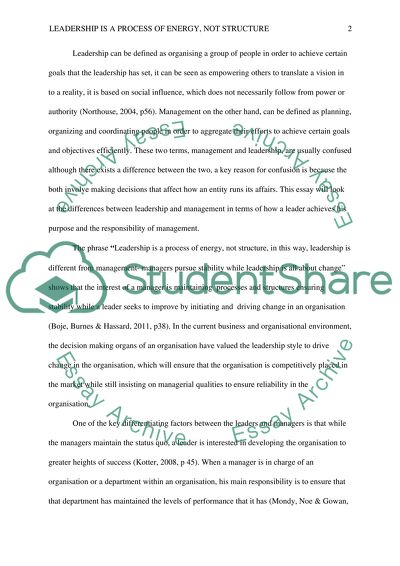Cite this document
(“Leadership is a process of energy, not structure. in this Essay”, n.d.)
Retrieved from https://studentshare.org/human-resources/1483022-leadership-is-a-process-of-energy-not-structure-in
Retrieved from https://studentshare.org/human-resources/1483022-leadership-is-a-process-of-energy-not-structure-in
(Leadership Is a Process of Energy, Not Structure. In This Essay)
https://studentshare.org/human-resources/1483022-leadership-is-a-process-of-energy-not-structure-in.
https://studentshare.org/human-resources/1483022-leadership-is-a-process-of-energy-not-structure-in.
“Leadership Is a Process of Energy, Not Structure. In This Essay”, n.d. https://studentshare.org/human-resources/1483022-leadership-is-a-process-of-energy-not-structure-in.


